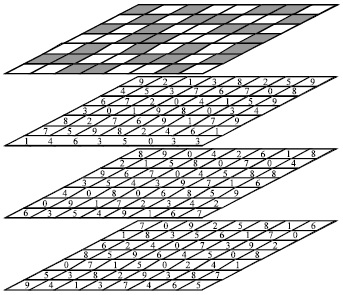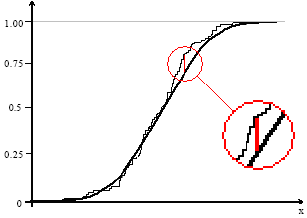Research Article
Central Limit Theorem based Cellular Automata for Generating Normal Random Numbers
Department of Mathematics, Parand Branch, Islamic Azad University, Parand, Iran
Ramin Ayanzadeh
Department of Computer Science, University of Maryland, Baltimore County, United States of America
Elaheh Raisi
Department of Computer, Science and Research Branch, Islamic Azad University, Tehran, Iran
Aidin Sadighi
Department of Computer Science, University of Southern California, United States of America














